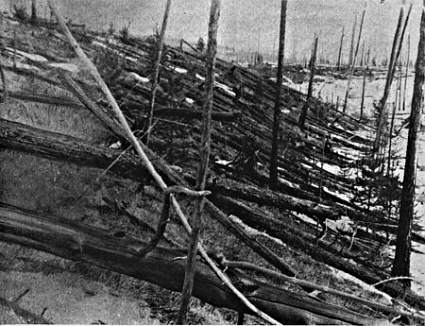2008 marks the centennial of one of the most mysterious and startling events to occur on planet Earth. OK, to be more accurate, it was June 30, but give me a break. I've had a cold.
It occurred in a remote region of Russia near the Podkamennaya Tunguska River in Siberia. Just after 7 a.m., an unidentified object screamed through the atmosphere and created an explosion that leveled 800 square miles of forest and broke windows several hundred miles away.
The first successful scientific expedition to the impact site didn't occur for 19 years, but what researchers found was startling. Some 80 million trees were stripped bare, scorched and flattened in a radial pattern, emanating from what was determined to be ground zero. Yet, no impact crater was found, and oddly, the trees at the epicenter remained standing.
Numerous theories have been put forth in an attempt to explain the Tunguska event, including the destruction of a chunk of antimatter, the sudden release of 10 million tons of subterranean gas, a black hole passing through the Earth and an alien weapon being used to save the planet from some extraterrestrial threat. Naturally, many felt it was the beginning of the final apocalypse.

Also — and I'd feel remiss if I didn't mention it — in the movie Ghostbusters, Dan Aykroyd's character Raymond Stantz refers to it as an "interdimensional crossrip" comparable to the one caused by their reversing the particle flow of their proton packs.
The most likely explanation, however, is that of a large meteoroid exploding mid-air. It's estimated that a stony body measuring 120 feet wide and weighing 220 million pounds entered the atmosphere and generated so much heat that it destroyed itself. Traveling around 33,500 miles per hour, it exploded 28,000 feet above the Earth's surface with a power equaling as much as 1,000 times that released by the atomic bomb dropped on Hiroshima, Japan.
Earth's just lucky that it occurred in such a remote area. About 5 hours later and the meteoroid would have hit St. Petersburg and vaporized 2 million people. Of course, with the number of objects that enter our atmosphere every day, it's only a matter of time before we run into another doozie.




